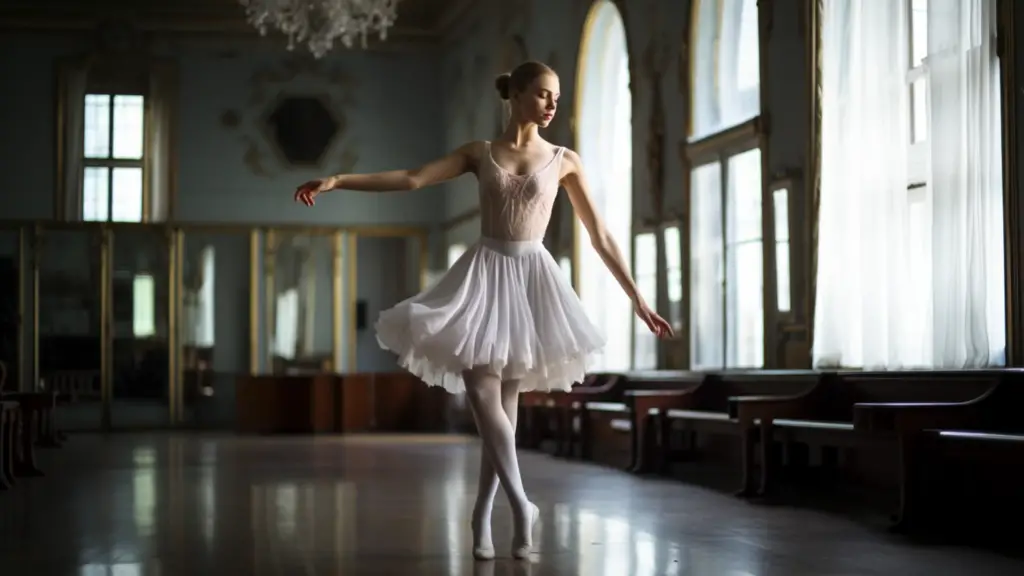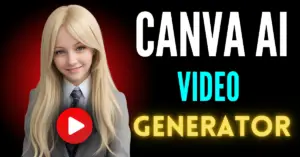In this article, we’ll dive into a comprehensive comparison of AI video animation between Pika Labs and Runway Gen 2. We’ll assess their capabilities in basic animation, prompt creativity and flexibility, human motion animation, head motion, camera motion options, and other essential factors.
By the end of this comparison, you’ll have a clearer understanding of the strengths and weaknesses of these AI video generators.
Basic Animation Comparison:
We’ll kick things off by examining how these AI models handle basic animation tasks.
1. Reference Image: Ballet Dancer

Pika Labs: When we upload the ballet dancer image to Pika, the initial animation appears rather unimpressive. It struggles to generate human motion.
Runway Gen 2: In contrast, Runway’s animation shines with more cinematic camera movement and convincing human motion. However, you might notice a gradual increase in brightness throughout the video.
It’s essential to mention that both Pika and Runway animations tend to warp the face of the dancer, a common issue across both platforms.
2. Reference Image: Ship on the Water

Pika Labs: Pika does a commendable job animating the ship’s waves and simulating physics as the ship bobbles up and down.
Runway Gen 2: Runway’s animation is somewhat less realistic, with static waves and occasional camera movement. Once again, we observe the brightness increase towards the end of the video.
Note: One notable difference is the video length, with Runway animations being longer at 4 seconds compared to Pika’s 3 seconds.
RunwayML offers the feature of extending video length up to 16 seconds, but when tested, it often results in videos with a different color palette and unintended alterations to the content.
In summary, while Runway provides more cinematic animations, it often struggles with maintaining the integrity of the original reference image. Pika, on the other hand, offers more creative and flexible animations.
Prompt Creativity & Flexibility:
Prompt creativity and flexibility refer to the AI’s ability to incorporate user ideas into the animations.
Let’s explore this aspect with a few examples.
Pika Labs: Pika excels in this category, allowing users to inject their prompts into the AI’s video generation process. For instance, you can ask Pika to animate a bear walking, and it will attempt to incorporate your idea.
Runway Gen 2: RunwayML, while proficient in cinematic animations, falls short in terms of prompt creativity and flexibility. It often disregards user prompts, leading to animations that may not align with the user’s instructions.
For instance, when asked to animate a building collapsing, Pika attempts to follow the prompt and includes falling walls, while Runway primarily focuses on camera movement without adhering to the user’s request.
Human Motion Comparison:
Animating human motion is a challenging task for AI, and see how Pika and Runway tackle this challenge.
Pika Labs: Pika’s animations of human motions are less cinematic but more adventurous.
It often attempts to animate various motions, even if the results may appear distorted or inaccurate.
Runway Gen 2: Runway outshines Pika in human motion animation. It produces high-quality animations with a wide range of human motions, maintaining accurate physics and body proportions.
Let’s dive into specific examples to illustrate these differences:
- Dancer Wearing a Dress:
- Pika: Displays some motion but with occasional disfigurement.
- Runway: Offers a wide range of coherent and consistent motion but often distorts the original image.
- Skateboarder:
- Pika: Minimal motion.
- Runway: Animates the skateboarder sliding around with added brightness towards the end.
- Girl Running:
- Pika: Shows the girl’s legs moving in a running motion with some disfigurement.
- Runway: Incorporates a camera slide and brightness increase.
In summary, Runway excels in human motion animation but leans towards a more rigid style, while Pika showcases greater creativity and flexibility.
Human Head Motions:
Animating human head motions is another interesting aspect to consider.
Here’s how Pika and Runway compare in this category:
Pika Labs: Pika produces decent facial motions with occasional blinks. However, it often keeps the head static while animating other elements.
Runway Gen 2: Runway delivers smoother head tilting movements but may introduce changes in facial structure while maintaining the original paint.
Camera Motion Options:
Both Pika Labs and Runway Gen 2 offer a range of camera motion options, and it’s important to evaluate their capabilities:
1. Zooming:
Both platforms allow zooming in and out, but Runway’s camera shots are often more dynamic.
2. Panning:
Pika and Runway both offer panning motions. Pika’s motions are straightforward but accurate, while Runway’s panning is more dynamic and might lead to distortion in videos.
3. Rotating:
When it comes to rotating the camera, Pika’s motions are generally more physically accurate, whereas Runway may struggle to maintain consistency.
4. Combining Motions:
Runway offers the advantage of combining different classes of camera movements, such as zoom and pan or zoom and rotate, which is not available in Pika.
Conclusion:
In the comparison of AI video animation, Pika Labs and Runway Gen 2 each have their strengths and weaknesses. While Runway excels in cinematic human motion and offers dynamic camera shots, Pika showcases greater creativity and flexibility in responding to user prompts.
Basic Animation: Pika Labs demonstrates more consistency in adhering to the source content. Runway-Gen2 leans towards cinematic animations but may occasionally stray from the original image.
Prompt Creativity & Flexibility: Pika Labs outperforms Runway-Gen2 in executing custom prompts effectively, showcasing its flexibility and creativity.
Human Motion Animation & Camera Movement: Runway-Gen2 excels in cinematic camera movements but sometimes faces challenges with human motion. Pika Labs maintains better fidelity to the original content.
Pricing: Pika Labs offers a free plan, making it more cost-effective for users.
The choice between these platforms depends on your specific needs. If you prioritize cinematic animations and are willing to work with certain limitations, Runway might be the right choice.
However, if you seek a more creative and flexible AI video generator without the cost associated with Runway’s premium plans, Pika Labs is a solid option.
Ultimately, the decision boils down to your project requirements and budget.
Whichever AI platform you choose, remember that AI video generation is an evolving field, and both Pika and Runway continue to improve their capabilities over time.




